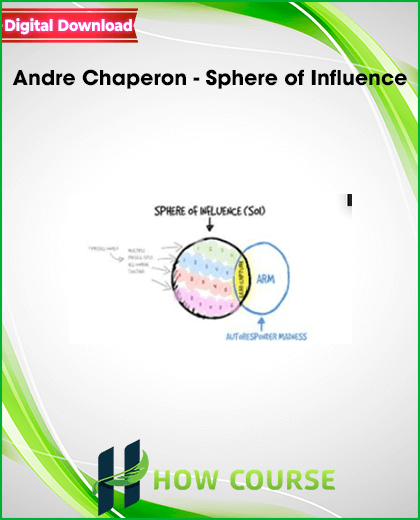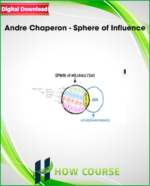Andre Chaperon – Sphere of Influence
In an effort to turn the world’s population into advertising eyeballs, the billion dollar social media platforms have successfully transformed everyone into a marketer with a free megaphone. Our competition can be a 13 year old kid from Alabama with an iPhone and a free Instagram or YouTube account.
Nikkie De Jager
Nikkie De Jager is a twenty-something year old Dutch makeup artist who shares her talents and techniques on her popular YouTube vlog and Instagram account. She has 13.4 million subscribers to her channel, 14m followers on Instagram, plus another 2m followers on Twitter. According to SocialBlade, her videos earn her over one million dollars each year (likely even more now as you read this).
This is our new reality.
It can be overwhelming when we think that our competition include kids still in school, kicking ass at attracting millions of eyeballs to their social channels.
Conventional wisdom says shout louder to get attention at all costs. But this is not the way to get noticed.
Conventional wisdom is based on a flawed assumption that lead volume matters more than lead quality because more leads = more sales. It’s simple math. But it’s also a red herring.
A significant part of successful marketing is counterintuitive (which this manifesto will reveal and unpack).
We don’t NEED millions of followers or tens of thousands of email subscribers to be incredibly successful. That’s the hard way, which requires random luck and good timing. That’s not a strategy, or everyone would be billionaires with six pack abs.
A repeatable strategy is to think narrower — tiny, even. Kevin Kelly’s 1,000 True Fans is a foundational concept of thinking smaller (the number itself is not important; it can just as easily be 100).
“Instead of trying to reach everyone, we should seek to reach the smallest viable audience and delight them so thoughtfully and fully that they tell others.” — Seth Godin
But to get there requires a shift in thinking.
This manifesto will likely change how you see marketing, business, what you’ve done in the past, and how you’ll likely change moving forward.
One word of warning…
As with a magic trick, you can’t unsee something that may push against the walls of your subjective reality in a way that makes you uncomfortable.
So I’ll say this: if you are happy and comfortable with your current reality about modern marketing and business, do not read further.
The thesis of this manifesto is that better prospects matter. But the reality is that prospects are not created equal and neither are customers. We get to choose the type of business we create, the people we want to do business with, and what “success” looks like to each of us.
There is a cause and effect that happens in every business; actions taken to get the attention of people (cause), and the type of prospects, and by extension, the type of customers acquired from those actions (effect).
Broadly speaking we all understand this dynamic on a basic level. But what’s interesting and revealing is how blind the majority of marketers are to the root cause of the results they see playing out in their businesses.
We live in a culture where the Band-aid solution rules supreme in every category of society. So it’s no wonder our ability to solve downstream problems by going upstream to the source, is generally nonexistent.
Example:
Problem (effect): not enough customers
Solution (cause): increase lead volume (clickbait, lowering barriers to entry, etc.)
Yet this thinking is fundamentally flawed. Worse, because our thinking is misguided, the solution (a better more desirable effect) has zero chance of being created.
I’ll use a really bad analogy to make the point.
You can’t lose weight by going to the gym and pumping iron and doing HIIT until your cardio system is screaming for mercy, if after each workout you consumed six donuts and washed them down with a 600ml full-sugar Coca-Cola. You can’t out-exercise the cause of the weight gain. The only intervention that will work would be to replace the upstream cause. Replacing the six donuts and Coke with something less, well … problematic. Perhaps a whole-food green smoothy made from spinach and avocado with no added sugar, would likely have an immediate positive effect.
In our world, success is not the result of a 100,000 email subscriber list that can only generate customers through coercion and the use of short-sighted tactics and loopholes that produce no long-term upside.
Shawn and I believe successful businesses are built on high-quality, long-term, happy customers. And the path to get there is based on earning lasting attention, not buying or gaming temporary attention.
Earning attention is an emergent property when we lead with empathy, serve first, provide real value, and care about who we serve (and the results they get).
In order to present the idea that we should over-invest in the process to create better prospects (cause) — because better prospects matter downstream (effect) — I’ll need to start with first principles to unpack two fundamental realities of every business on the planet.
Then I’ll explain why over-investing in creating better prospects will affect everything else you do downstream (customers, revenue, happiness, meaning, and purpose).
The journey starts with this first fundamental reality.
The rare resource online is not the ability to reach almost anyone (broadly speaking, that’s the easy part that requires only dollars or time), but earning attention that has a shelf life longer than a carton of open pasteurized milk.
Short-term, attention can be purchased. But earning it takes longer because earning it requires the dynamic of a relationship and a longer time horizon.
What reveals itself through this thinking is that attention is an asset to be earned, not gamed. That the assumption that more leads equals more sales is fundamentally flawed.
When you optimize for a short-term result (to maximize lead flow, for example, or to steal attention for a quick win), the second and third-order downstream consequences will be negative (suboptimal). Just because negative downstream effects are invisible, doesn’t mean they don’t exist.
When we over-invest in long-term relationships with our prospects, we earn trust, and with trust comes attention with a very long half-life.
This is what it means to be a modern marketer, who gives a shit about the people they seek to serve. When our marketing leads with generosity and empathy before a transaction ever takes place, we win because our prospects win first.
This is the new reality; you can either accept it or keep playing by the old rules. Reality won’t change — but, based on your mindset and behavior, your outcome will be radically different.
> Please contact our team if you have questions, or broken links via our email [email protected].








